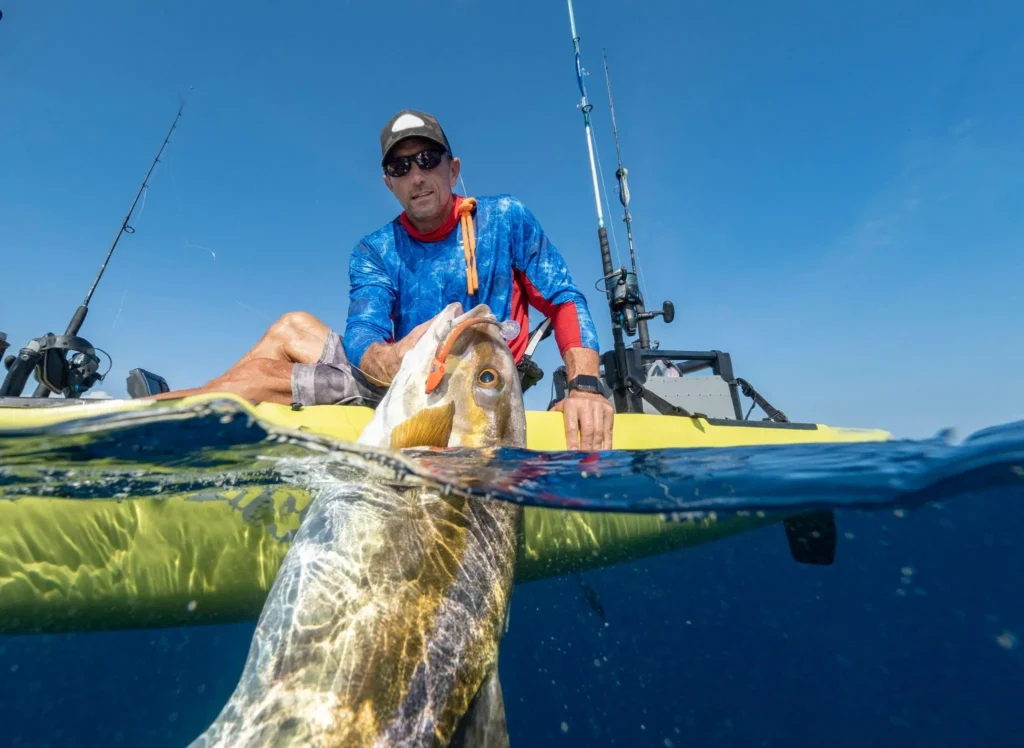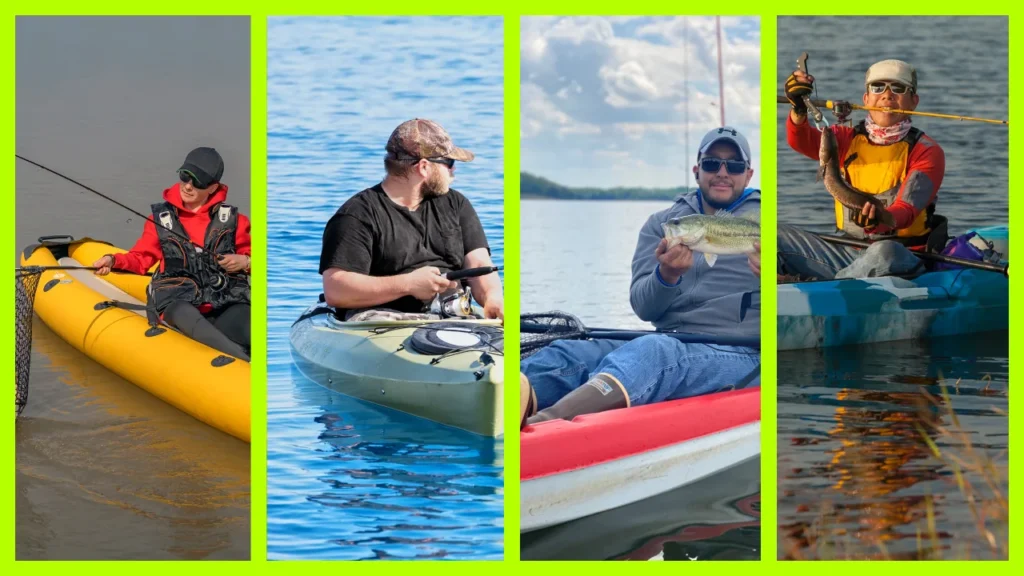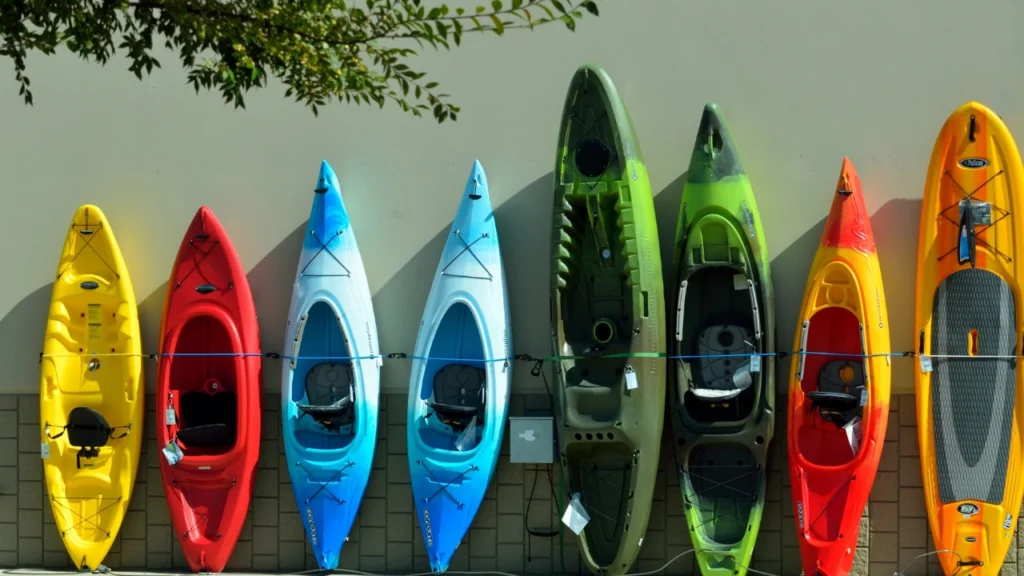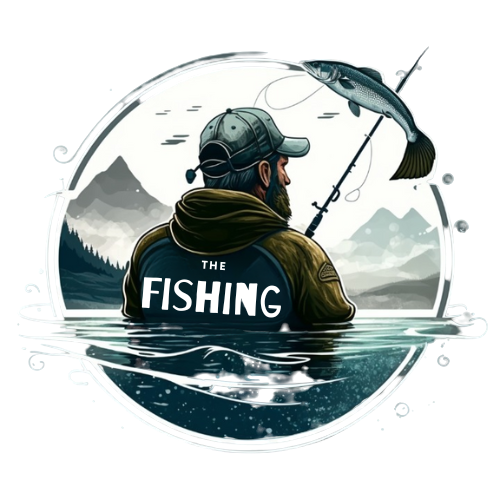As an angler, you’re always on the lookout for ways to increase your chances of a successful fishing trip. One question that often arises, Does fishing kayak color matter?

In this guide, I will give you the answer and explore the importance of kayak color and its impact on fishing.
Key Takeaways
- The color of your fishing kayak may have an impact on your angling success.
- Factors such as water visibility, fish behavior, and environmental conditions can influence the effectiveness of kayak color.
- The psychology behind kayak color choice may also play a role in fish attraction.
- Evidence and anecdotal experiences differ on the importance of kayak color.
- Selecting the best color for your fishing kayak is essential in optimizing your angling experience.
Table of Contents
Choosing the Right Kayak Color: The Impact on Fishing
Choosing the right color for your fishing kayak can make a significant difference in your fishing experience.

The color of your kayak can either attract or deter fish, depending on various environmental factors.
Here are some of the key considerations when selecting the best color for your fishing kayak.
Water Visibility
The color of your kayak should blend in with the water to avoid startling fish.
If you are fishing in clear water, choose a light-colored kayak such as white or yellow.
For murky water, a darker color like black or green will make your kayak less visible to fish.
Fish Behavior
Each fish species has unique color preferences, and selecting a kayak color based on the type of fish you are targeting can increase your chances of success.
For example, bass are known to be attracted to red, while trout prefer earthy tones like brown and green.
Environmental Conditions
The time of day and weather conditions can also impact kayak color selection.
During bright and sunny days, lighter colors like white and yellow reflect sunlight, making fish more likely to notice your kayak.
On the other hand, during overcast or cloudy days, darker colors offer better camouflage.
Overall, the best kayak color for fishing depends on various factors, and there is no one-size-fits-all solution. However, keeping these considerations in mind when making your selection can significantly improve your chances of a successful fishing trip.
More: How Stable Is A Fishing Kayak? A Closer Look
The Psychology of Kayak Color Choice
While some anglers choose their kayak color based on personal preference, the psychology behind color selection for fishing kayaks is worth considering. Color can affect fish behavior and attraction, and understanding the principles behind color theory can give anglers a competitive edge.

Research has shown that fish have the ability to differentiate colors, although their perception of color may differ from that of humans.
Different colors can also have varying levels of visibility in different water conditions.
For example, bright colors may be more visible in clear water, while darker colors may blend in better with murky water.
Color can also affect an angler’s mood and confidence.
A kayak in a color that an angler finds aesthetically pleasing may increase their enjoyment of the fishing experience and lead to a more positive attitude, which can contribute to better fishing success.
More: Are Fishing Kayaks Good for Rivers? Find Out Here
Does Kayak Color Affect Fishing Success?
While some anglers swear by certain colors, others argue that it has no effect whatsoever.
So, does kayak color affect fishing success? The answer is not so straightforward. It’s important to note that there is no scientific evidence to support the idea that certain kayak colors will attract more fish or increase your chances of catching them.
However, anecdotal evidence suggests that certain colors may be more effective in certain fishing scenarios.
For example, brighter colors such as orange, yellow, and lime green may be more visible in low-light or murky water conditions, making it easier for fish to spot your bait.
On the other hand, more natural colors such as brown or green may blend in better with the surroundings, making it more difficult for fish to detect your presence.
More: Is Kayak Fishing Safe?
Conclusion
The color of a fishing kayak can indeed have an impact on fishing success, although the extent of this impact is still a subject of debate amongst anglers. Factors such as water visibility, fish behavior, and environmental conditions should all be taken into consideration when selecting the best kayak color for a fishing trip.
You may also like: Top 6 Best Fishing Kayaks Under 600: Unbeatable Value!
FAQs:
Does Fishing Kayak Color Matter?
Yes, the color of a fishing kayak can have an impact on fishing success. Different kayak colors can affect water visibility, fish behavior, and environmental conditions, which in turn can influence your fishing experience.
How do I choose the right color for my fishing kayak?
When choosing the right color for your fishing kayak, consider factors such as water visibility, fish behavior, and environmental conditions. For example, in clear water, lighter colors like white or yellow may be more visible to fish. In murky water, darker colors like black or green may blend in better. Additionally, consider the time of day and weather conditions when selecting your kayak color.
Does the color of a kayak affect fishing success?
The impact of kayak color on fishing success is a topic of debate. While some anglers believe that choosing the right color can significantly improve their chances of catching fish, others argue that factors such as lure selection, technique, and location play a more significant role
How can I find the best color for my fishing kayak?
To find the best color for your fishing kayak, consider the fishing environment and conditions you typically encounter. Experiment with different colors and observe how fish react to them. Additionally, talk to other anglers and gather insights from their experiences. Remember, there is no one-size-fits-all answer, and what works for one angler may not work for another.
